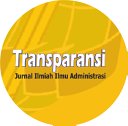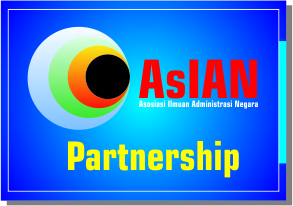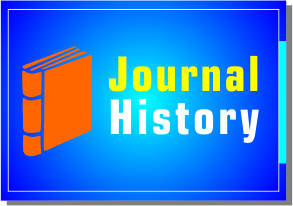Analysis of Village Fund Supervision in Gampong Geulumpang Tujoh, Matangkuli District (Study at the Inspectorate of North Aceh Regency)
DOI:
https://doi.org/10.31334/transparansi.v3i2.1139Keywords:
Analysis, Supervision, Village FundAbstract
Supervision of village funds is an action in the management of village funds carried out by government officials. This is because village funds are funds sourced from the State Revenue and Expenditure Budget intended for villages through the Regency / City Regional Revenue and Expenditure Budget and are used to finance government administration, development and community and community empowerment. The purpose of this study was to determine the supervision of village funds carried out by the Inspectorate at Gampong Geulumpang Tujoh, North Aceh Regency. The type of research is using a qualitative approach. Data analysis used data reduction, data presentation and drawing conclusions or verification. The results of this study were the supervision of village funds carried out by the Inspectorate at Gampong Geulumpang Tujoh, Matangkuli District, North Aceh Regency, carried out in several stages, namely inherent supervision, functional supervision, legislative supervision and community supervision and the obstacles faced by the inspectorate in monitoring village funds in Gampong. Geulumpang Tujoh, Matangkuli District, North Aceh Regency, is that there is no element of accuracy of village funds, is not timely in providing village fund information and is not objective in managing village funds. It is hoped that the obstacles in the supervision of village funds carried out by the Inspectorate of North Aceh Regency should require a special budget provided by the central government to further support the implementation of supervision of village funds carried out by the North Aceh District inspectorate, besides that the North Aceh Inspectorate needs to add members to each supervisory team so that the inspection can run thoroughly.References
Anggito, A., & Setiawan, J. (2018). Metodologi penelitian kualitatif. CV Jejak (Jejak Publisher).
Astuti, T. P., & Yulianto, Y. (2016). Good Governance Pengelolaan Keuangan Desa Menyongsong Berlakunya Undang-Undang No. 6 Tahun 2014. Berkala Akuntansi Dan Keuangan Indonesia, 1(1).
Harahap, S. S. (2004). Sistem Pengawasan Manajemen. Penerbit Pustaka Quantum.
Herujito, Y. M. (2001). Dasar-dasar manajemen. Jakarta: PT Gramedia.
Kurniawan, R., Rasyidin, R., Muhammad, M., & Aruni, F. (2020). Upaya Pemerintah dalam Menerapkan Peraturan Pemerintah No. 49 Tahun 2018 Tentang Pegawai Pemerintah Dengan Perjanjian Kerja (P3K) dI Kabupaten Aceh Utara. Jurnal Public Policy, 6(1), 41–44.
Maringan, M. S. (2004). Dasar-Dasar Administrasi dan Manajemen. Jakarta: Ghalia Indonesia.
Muhammad, M., & Kurniawan, R. (2020). BUMG Yang Mensejahterakan, Antara Peluang Dan Tantangan (Studi Dilingkungan Pemerintah Kota Lhoksuemawe). Jurnal Reformasi Administrasi: Jurnal Ilmiah Untuk Mewujudkan Masyarakat Madani, 7(2), 96–106.
Mulyana, D. (2008). Metode penelitian kualitatif: Paradigma baru ilmu komunikasi dan ilmu sosial lainnya. Bandung: Remaja Rosdakarya.
Mulyana, D. M. A. (2013). Metode penelitian komunikasi: Contoh-contoh penelitian kualitatif dengan pendekatan praktis. PT Remaja Rosdakarya.
Silalahi, U. (2006). Metode penelitian sosial. Unpar press.
Sugiyono, S. (2015). Metode penelitian pendidikan pendekatan kuantitatif, dan R&D. Alfabeta Bandung.
Sule, E. T., & Saefullah, K. (2014). Pengantar Manajemen Edisi ke 18. Bandung: Penerbit Prenadamedia Group.
Wibisono, N. (2017). Mengungkap fenomena pengawasan publik terhadap dana desa di Kabupaten Madiun. Jurnal AKSI (Akuntansi Dan Sistem Informasi), 2(2), 8–19.
Downloads
Additional Files
Published
Issue
Section
License

This work is licensed under a Creative Commons Attribution-ShareAlike 4.0 International License
Please find the rights and licenses in Transparansi : Jurnal Ilmiah Ilmu Administrasi By submitting the article/manuscript of the article, the author(s) agree with this policy. No specific document sign-off is required.
- License
The commercial use of the article will be governed by the Creative Commons Attribution license as currently displayed on Creative Commons Attribution-ShareAlike 4.0 International License.
2. Author(s)' Warranties
The author warrants that the article is original, written by stated author(s), has not been published before, contains no unlawful statements, does not infringe the rights of others, is subject to copyright that is vested exclusively in the author and free of any third party rights, and that any necessary written permissions to quote from other sources have been obtained by the author(s).
3. User Rights
Transparansi : Jurnal Ilmiah Ilmu Administrasi spirit is to disseminate articles published are as free as possible. Under the Creative Commons license, Transparansi : Jurnal Ilmiah Ilmu Administrasi permits users to copy, distribute, display, and perform the work for non-commercial purposes only. Users will also need to attribute authors and Transparansi : Jurnal Ilmiah Ilmu Administrasi on distributing works in the journal and other media of publications.
4. Co-Authorship
If the article was jointly prepared by more than one author, any authors submitting the manuscript warrants that he/she has been authorized by all co-authors to be agreed on this copyright and license notice (agreement) on their behalf, and agrees to inform his/her co-authors of the terms of this policy. Transparansi : Jurnal Ilmiah Ilmu Administrasi will not be held liable for anything that may arise due to the author(s) internal dispute. Transparansi : Jurnal Ilmiah Ilmu Administrasi will only communicate with the corresponding author.
5. Miscellaneous
Transparansi : Jurnal Ilmiah Ilmu Administrasi will publish the article (or have it published) in the journal if the article’s editorial process is successfully completed. Transparansi : Jurnal Ilmiah Ilmu Administrasi editors may modify the article to a style of punctuation, spelling, capitalization, referencing and usage that deems appropriate. The author acknowledges that the article may be published so that it will be publicly accessible and such access will be free of charge for the readers as mentioned in point 3.
Every accepted manuscript should be accompanied by "Copyright Transfer Agreement"prior to the article publication.











